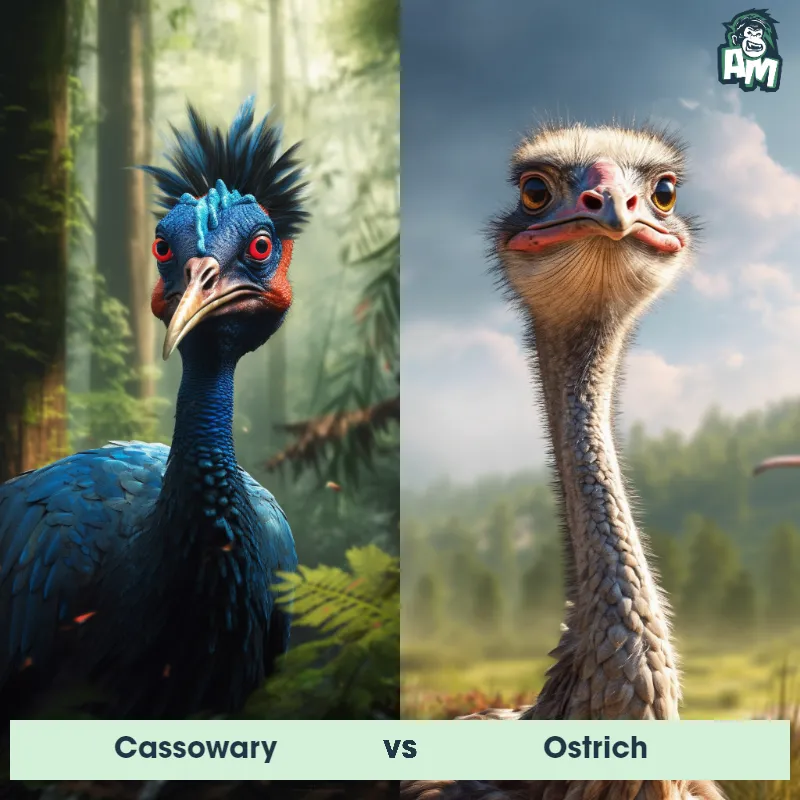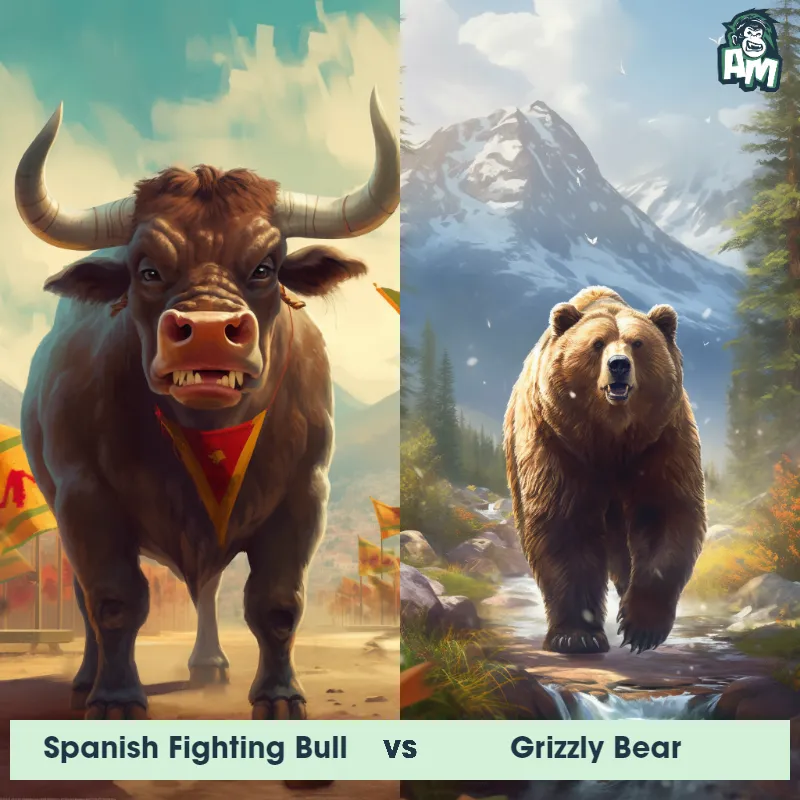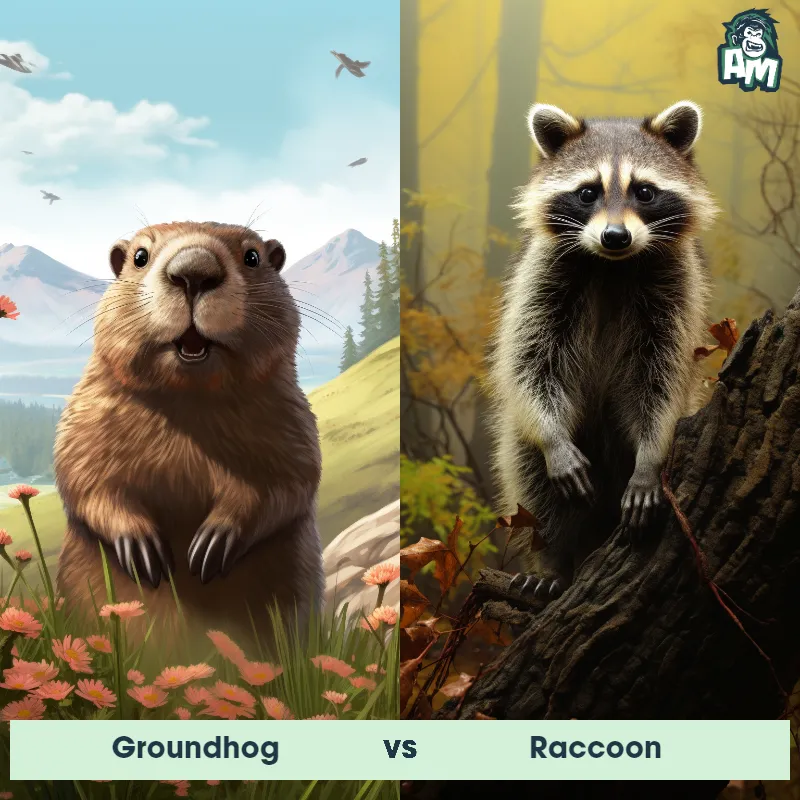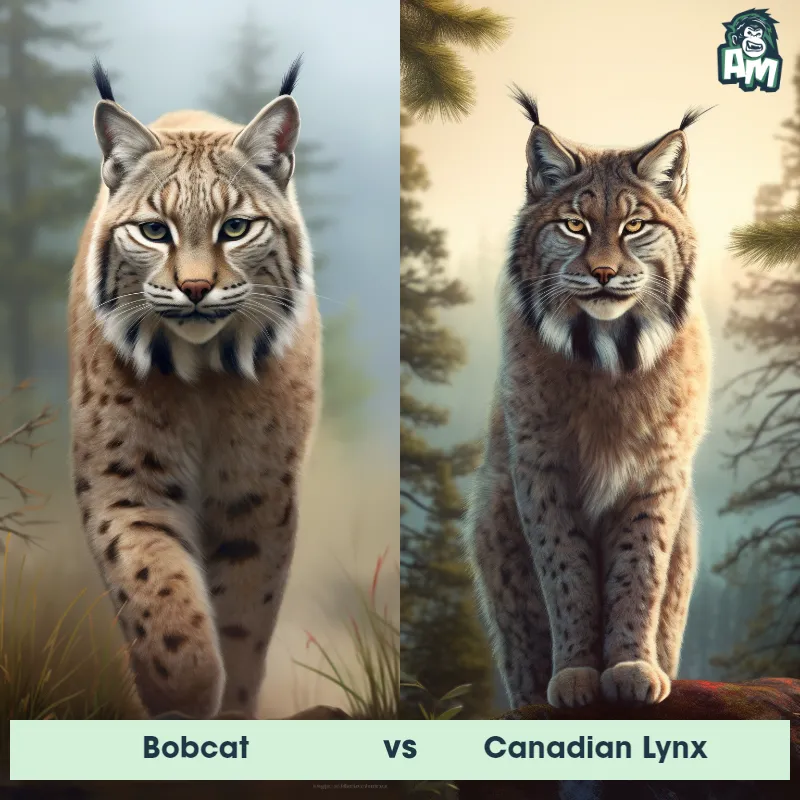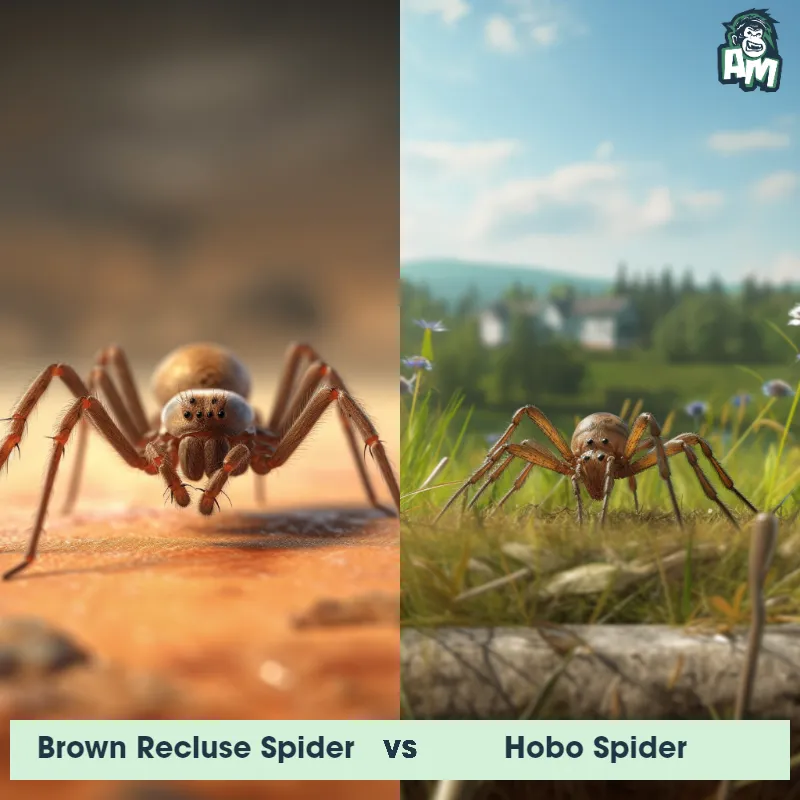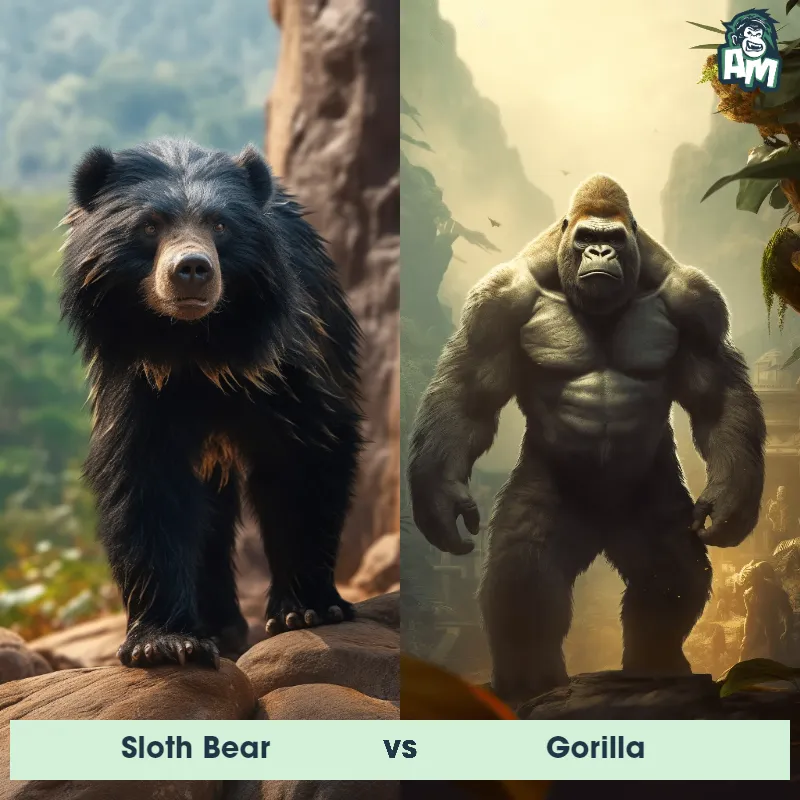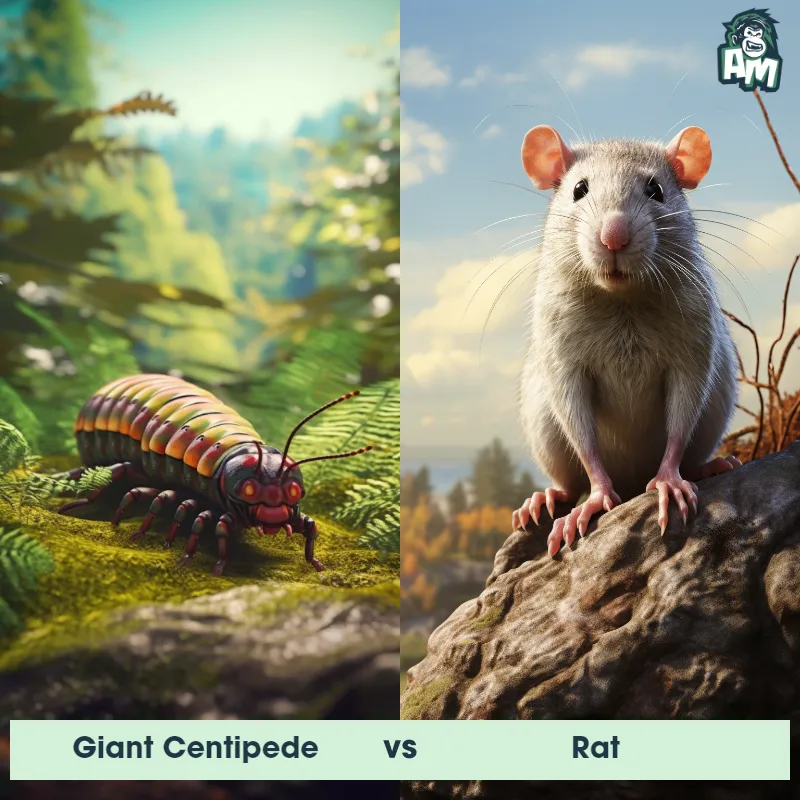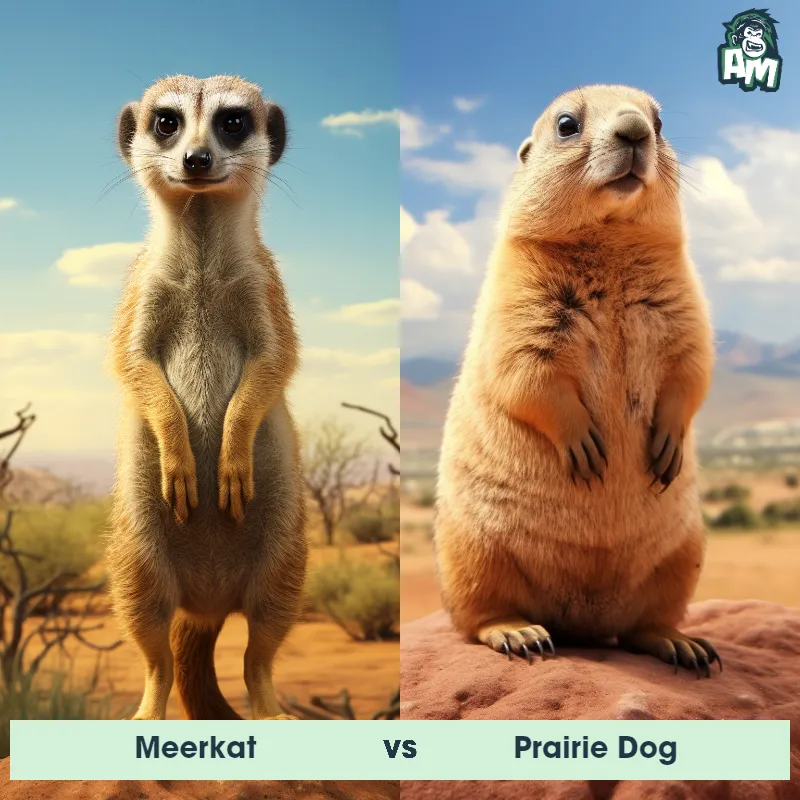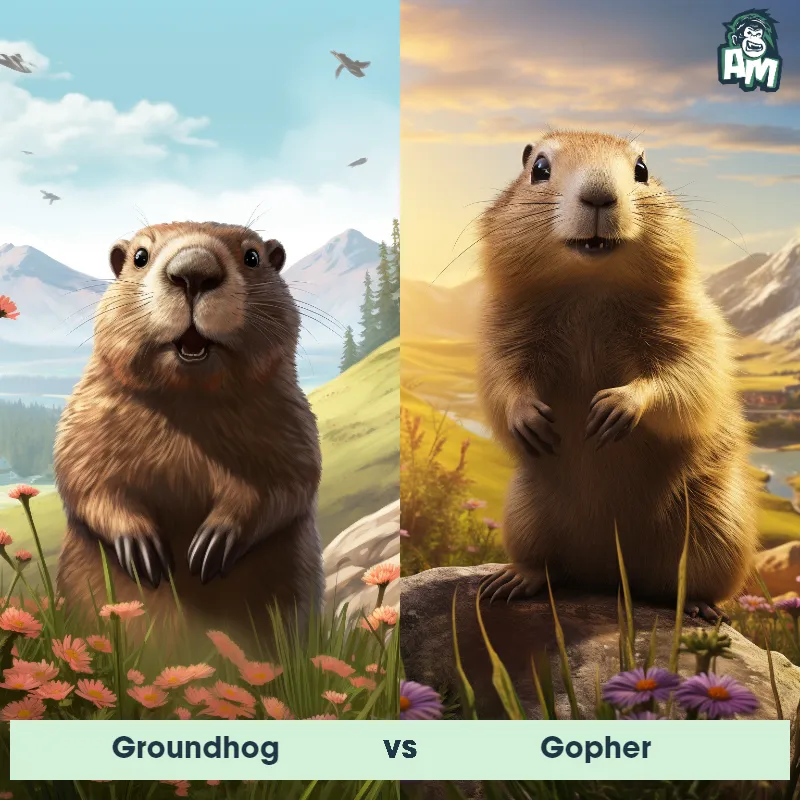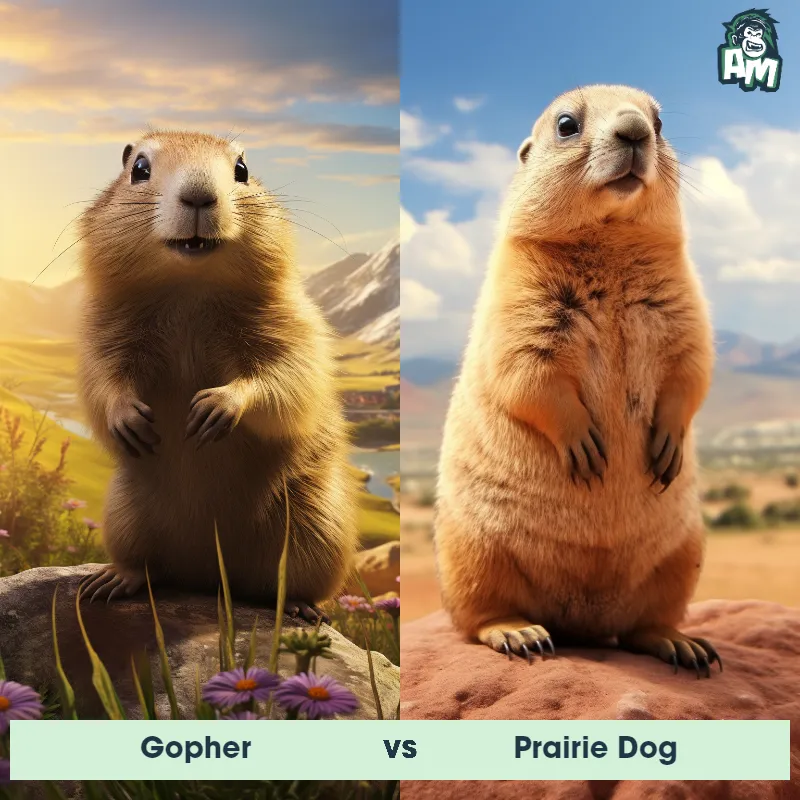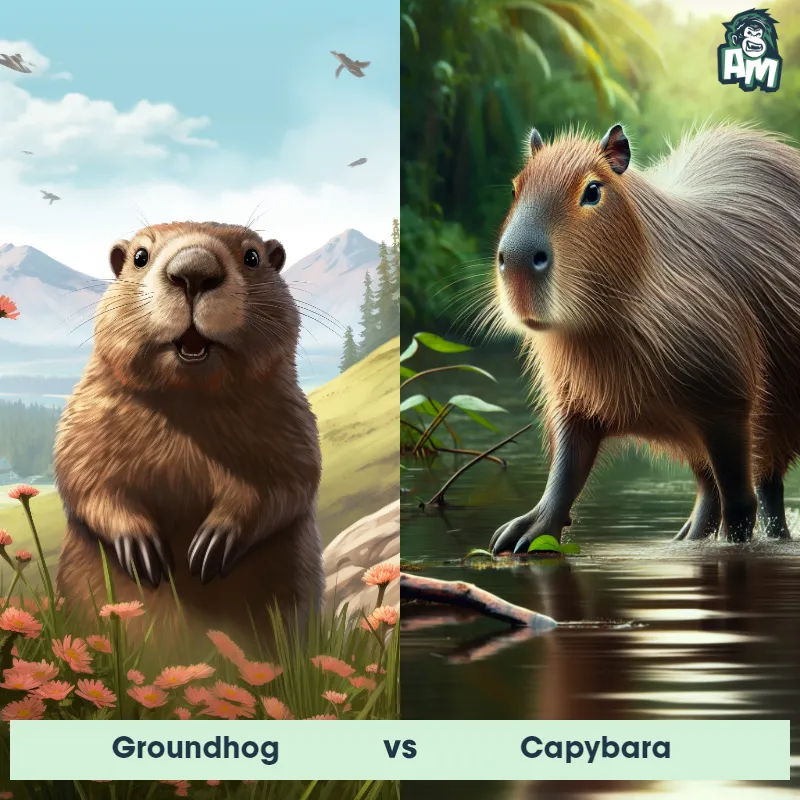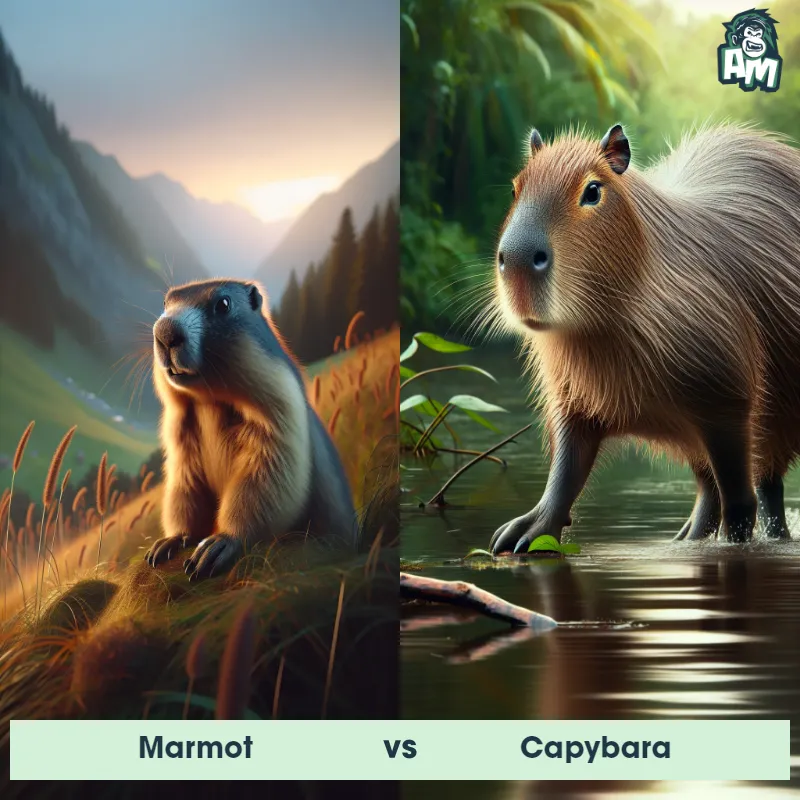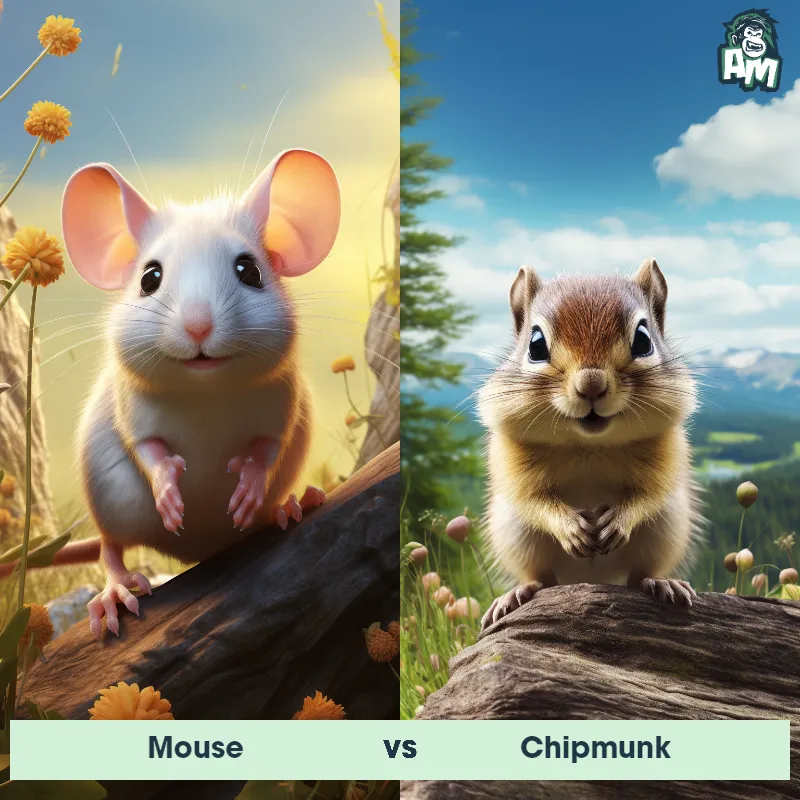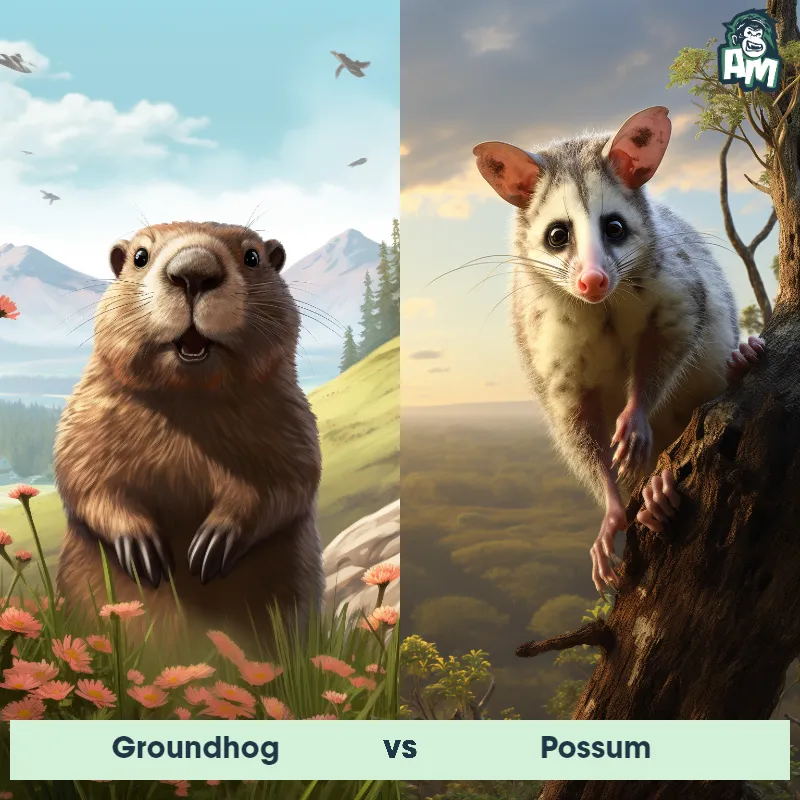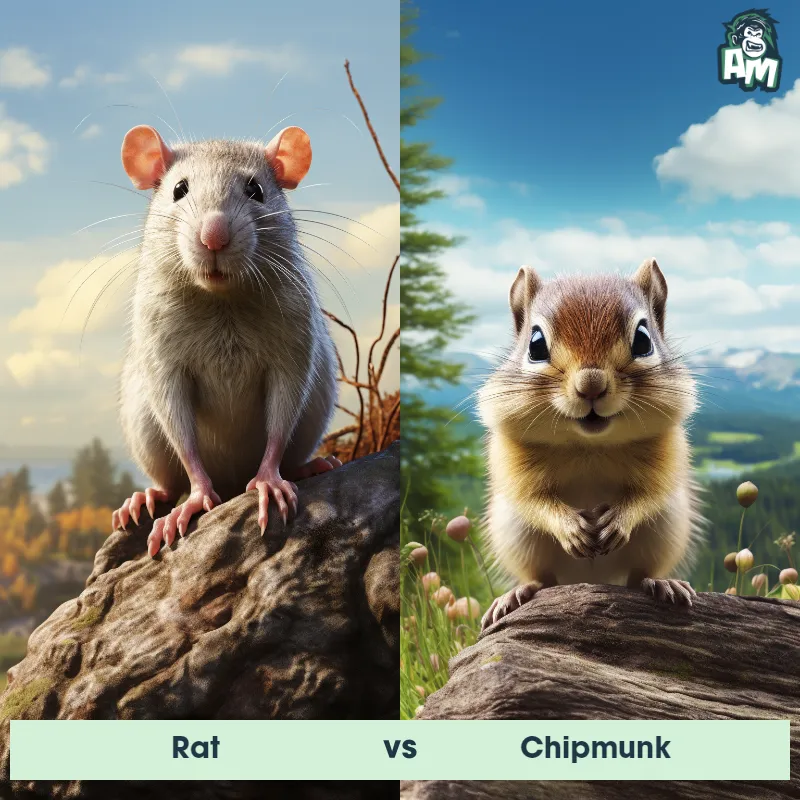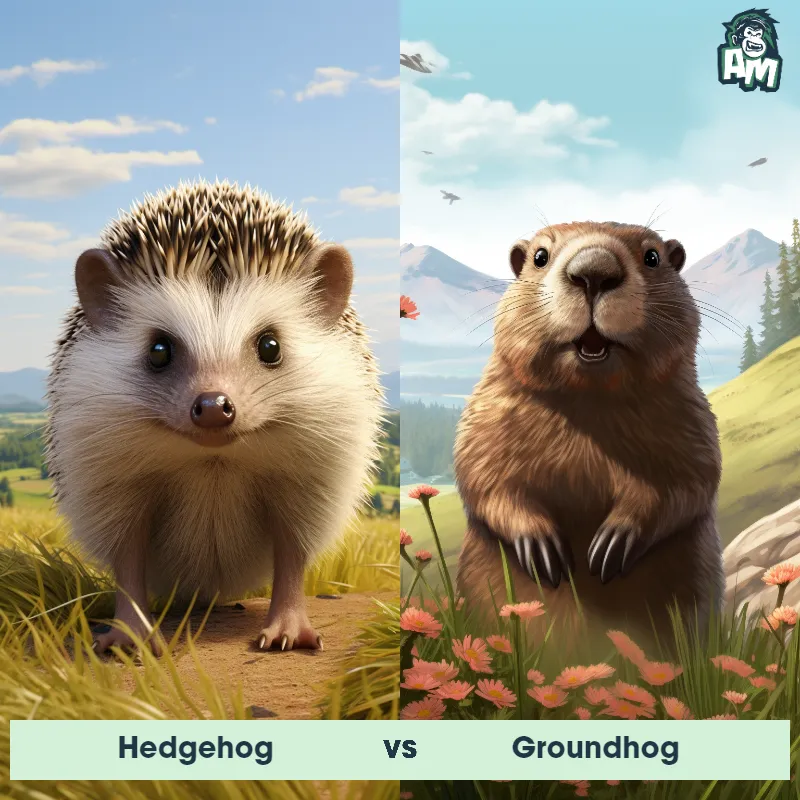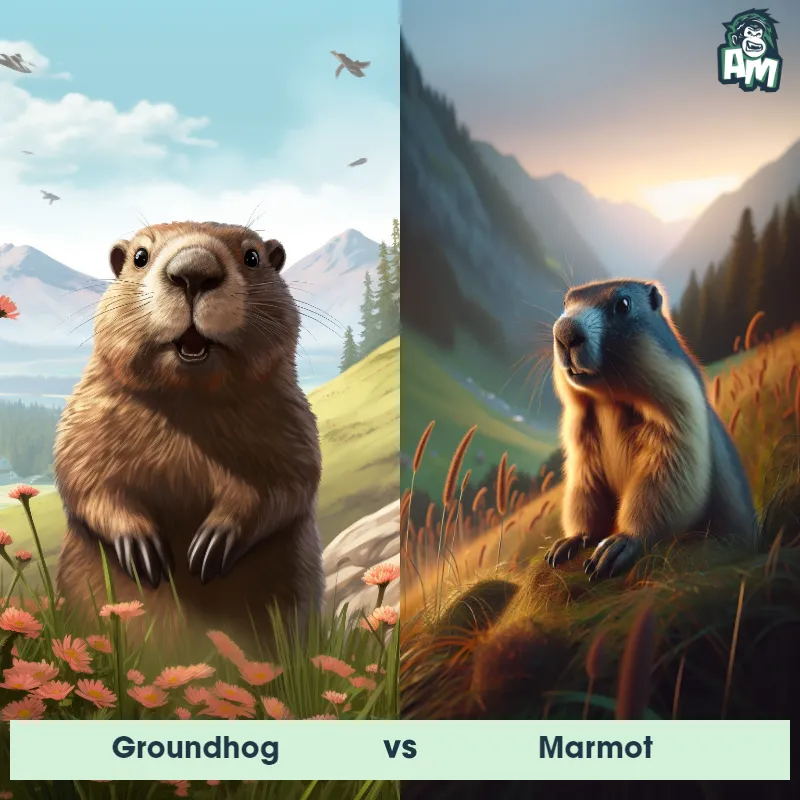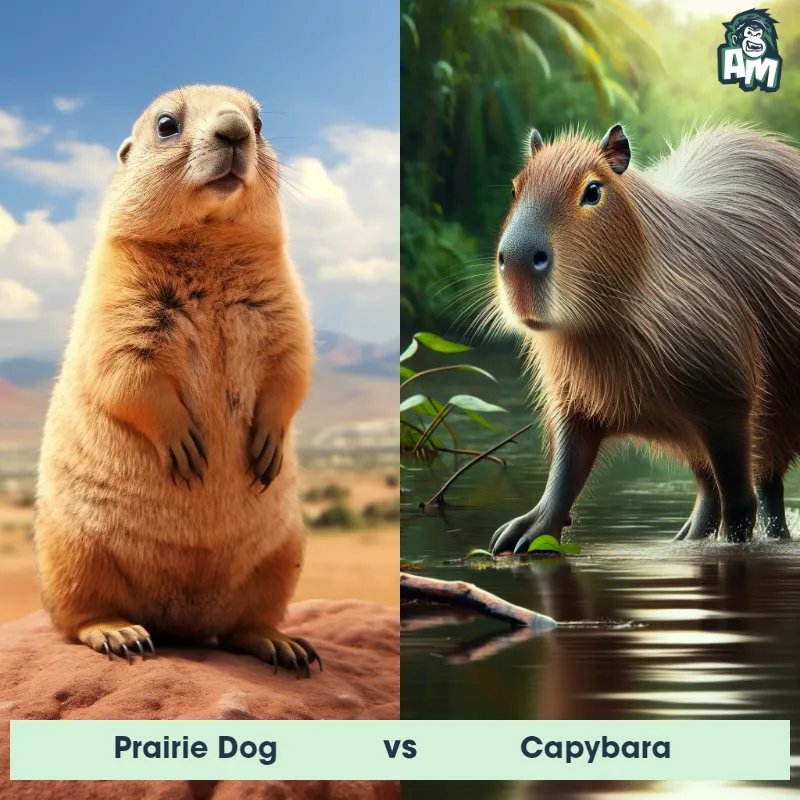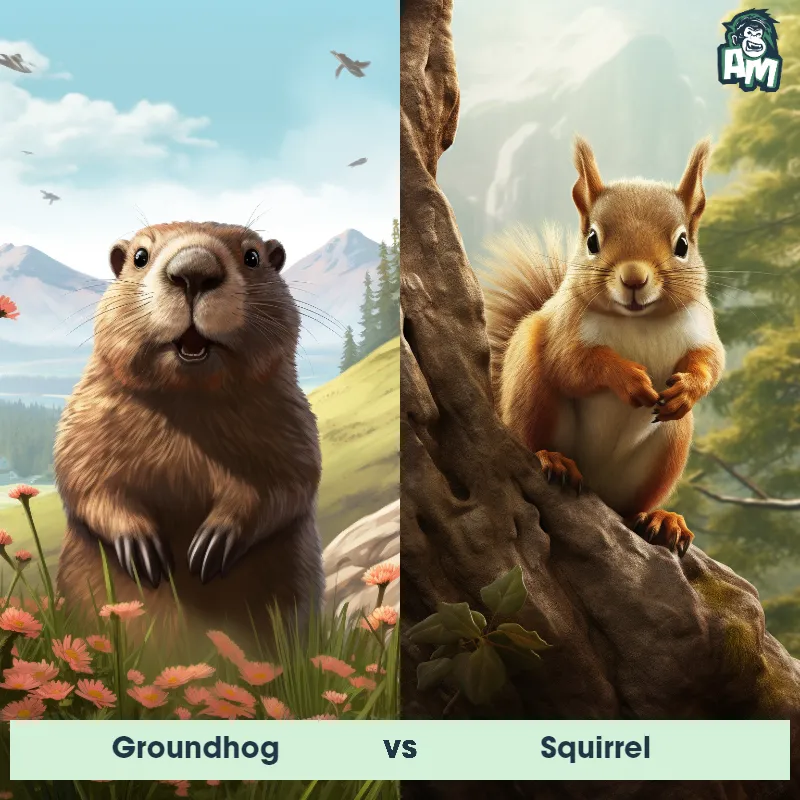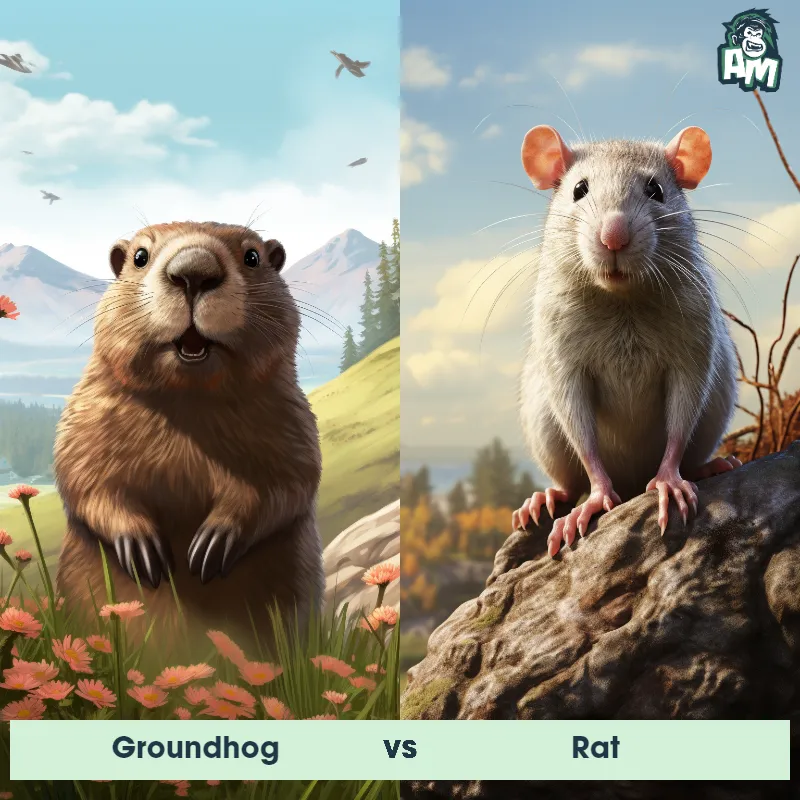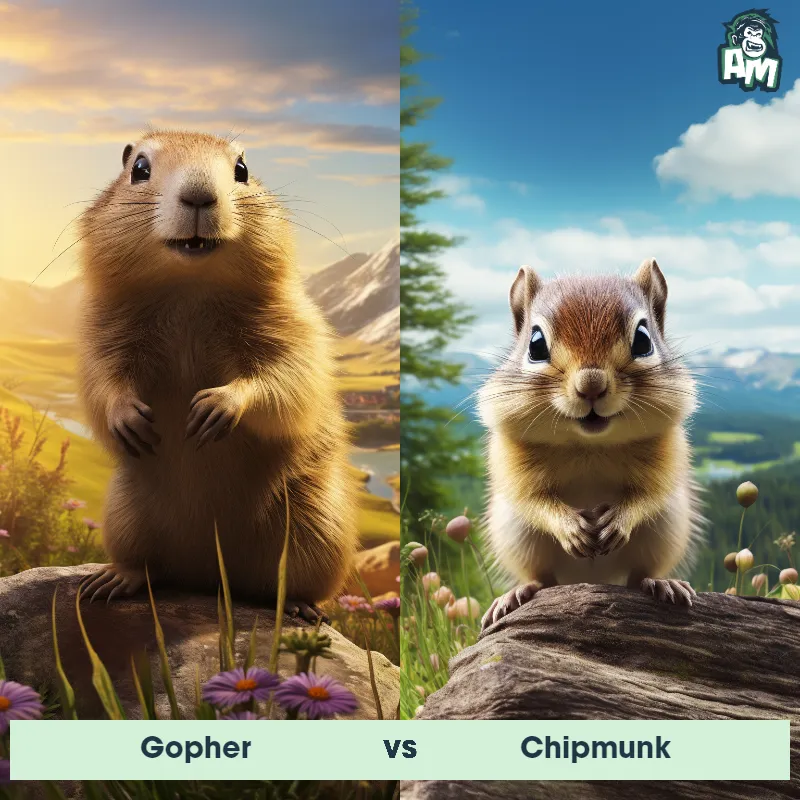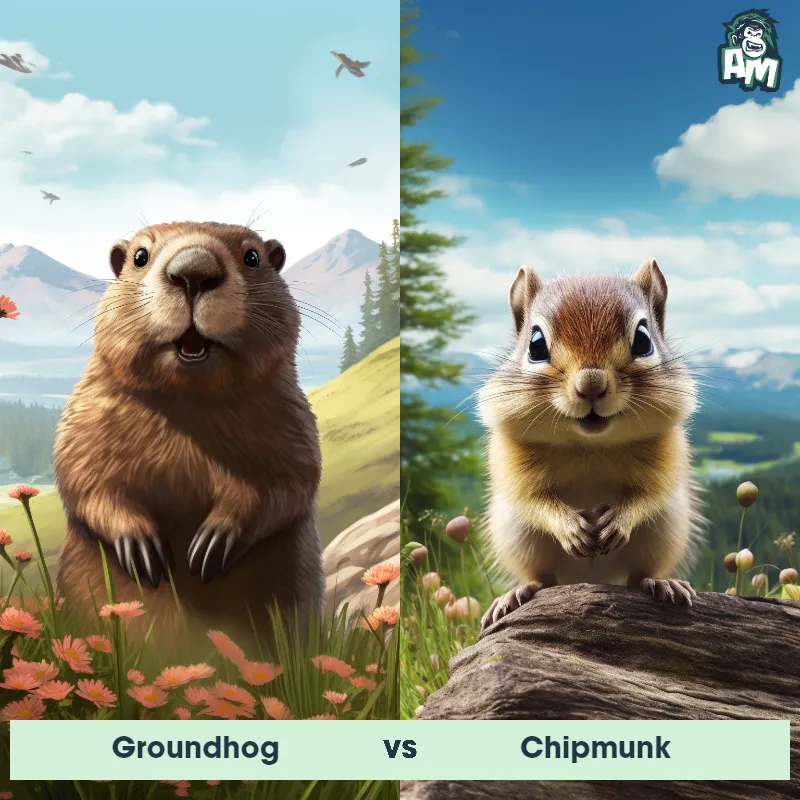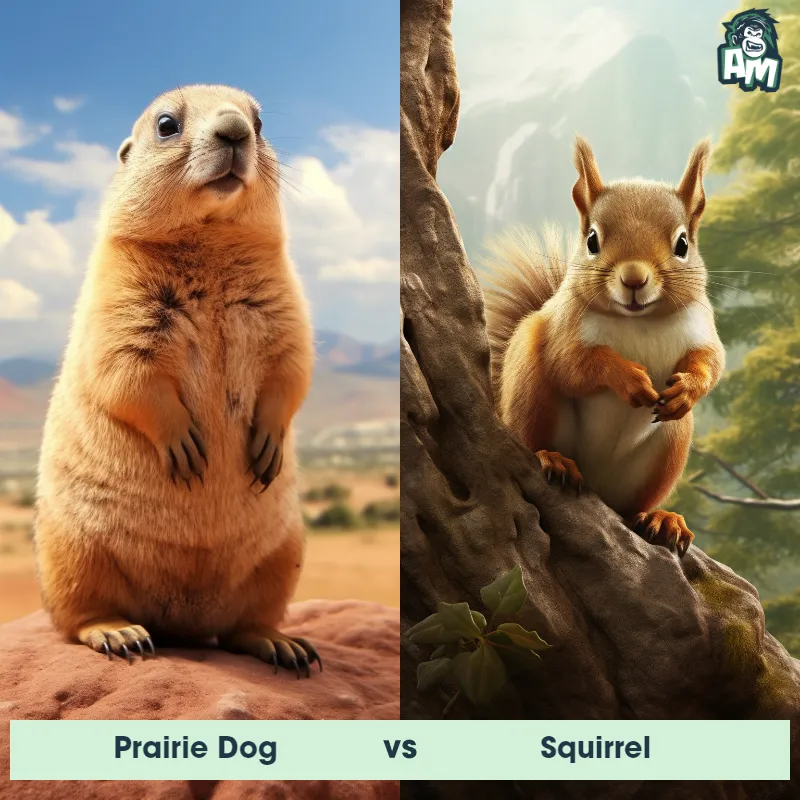Groundhog vs Prairie DogSee Who Wins

Ladies and gentlemen, welcome to a thrilling competition of earth burrowers. Today's match features the fast and industrious Groundhog against the agile and strategic Prairie Dog. Despite their common habitats, these opponents are nothing alike when it comes to the show of might and technique.
Contender 1: Groundhog
The Groundhog, also known as a woodchuck, is a rodent of substantial size known for its burrowing habits. Groundhogs possess a stout body, weighing up to 14 pounds and measuring up to 26 inches long. They have a grizzled, grayish-brown fur, short ears, a small tail, and sharp claws which are well-adapted for digging. The Groundhog's diet primarily consists of grasses, fruits, and vegetables, and they are often found in meadows, pastures, and along the edges of woodlands.
Fun Fact: Groundhogs are not only skilled diggers but also efficient swimmers and climbers, surprising traits for their seemingly clumsy build.
Contender 2: Prairie Dog
The prairie dog is a type of burrowing rodent native to the grasslands of North America. These small creatures have a stout body, a small head, and short legs, which are perfect for their lifestyle underground. They typically have a coat that ranges from brown to reddish in color. Prairie dogs are highly social animals, known to live in large colonies or 'towns' which can consist of hundreds or even thousands of individuals, and their intricate burrow systems can cover large areas.
Fun Fact: Prairie dogs have a complex communication system, using different sounds and calls to warn their colony about the approach of different types of predators.
Matchup Stats
| Groundhog | Prairie Dog | |
|---|---|---|
| Size | Up to 26 inches long (66 cm) | 12-16 inches (30-40 cm) |
| Weight | Up to 14 pounds (6.35 kg) | 1-3 lbs (0.45-1.36 kg) |
| Speed | 12 mph (19 km/h) | 35mph (56km/h) |
| Key Strength | Sharp claws for digging and defense | Ability to burrow quickly to escape danger |
| Biggest Weakness | Stout body, not built for speed | Small size and lack of strong defensive capabilities |
Current Votes
Groundhog vs Prairie Dog
See Who Wins
View More Matches
Looking For More?
Similar Matches
Scientific Stats
| Groundhog | Prairie Dog | |
|---|---|---|
| Scientific Name | Marmota monax | Cynomys |
| Family | Sciuridae | Sciuridae |
| Habitat | Meadows, pastures, and edges of woodlands | Grasslands |
| Geography | North America | North America |
| Diet | Grasses, fruits, and vegetables | Herbivore (Grasses, seeds, and occasionally insects) |
| Lifespan | 3 years - 6 years | 3 years - 5 years |
Key Differences between Groundhog and Prairie Dog
- Fur Color: Groundhogs typically have a coarse and grizzled fur that ranges from reddish-brown to dark brown, with a lighter underside, while Prairie Dogs have a lighter and more uniform fur coloration, varying from tan to light brown.
- Habitat: Groundhogs are primarily found in wooded areas, forests, and open fields with ample vegetation, while Prairie Dogs inhabit open grasslands and prairies, creating extensive burrow systems.
- Tail: Groundhogs possess a relatively short and bushy tail, which is around one-fourth the length of their body, whereas Prairie Dogs have a longer and thinner tail, often held upright when they are alert.
- Body Shape: Groundhogs have a stout and chunky body with short legs, while Prairie Dogs have a more slender and elongated body with longer legs.
- Ears: Groundhogs have small and rounded ears that are not very prominent, while Prairie Dogs have larger and more noticeable ears that stick out from the sides of their head.
- Size: Groundhogs are larger than Prairie Dogs, with an average length of 16-26 inches and a weight of 4-14 pounds, while Prairie Dogs are smaller, measuring around 12-16 inches in length and weighing only 1-3 pounds.



